#Porsche-Abarth
Explore tagged Tumblr posts
Text







Spent the day with this beautiful lady! We went for a nice drive to this gorgeous waterfall! It was a blast. Also stumbled across this 911. Being a Porsche girl.. I love seeing 911’s in the wild. It’s the dream car. One day I’ll own a gt3rs!
#waterfall#porsche#abarth#tgirl tummy tuesday#trans tummy tuesday#italy#italian#trans#transgender#trans pride#transisbeautiful#mtf#transgirl#girlslikeus#mtf hrt#maletofemale#transformation#trans woman#trans women#transexual#actually trans#mtf trans#this is what trans looks like#trans community#trans feminine#trans fem#trans girls#trans experience#trans is beautiful#trans is sexy
920 notes
·
View notes
Photo

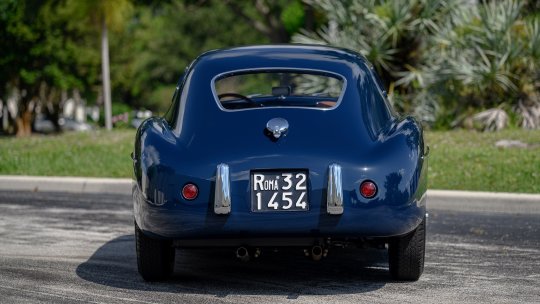

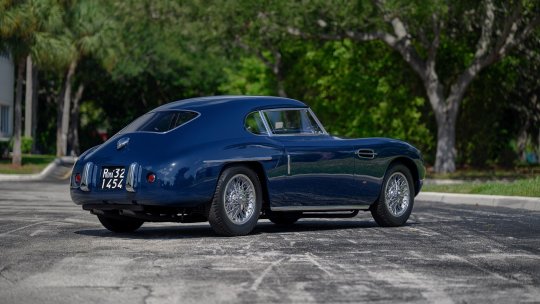


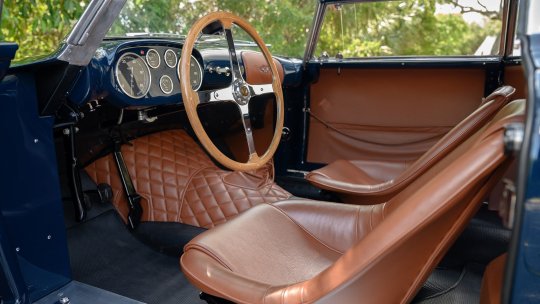
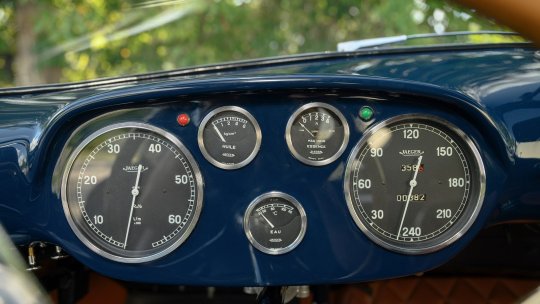

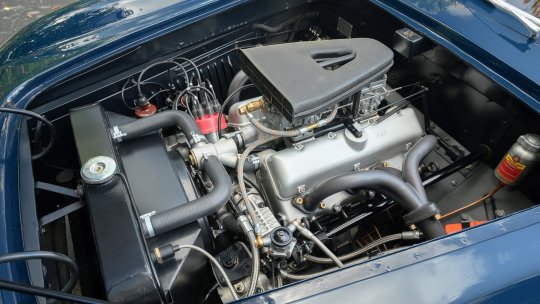
Siata 208 CS ( 1 of 6).
Societá Italiana Auto Trasformazioni Accessori (SIATA) created a marvelous assortment of machinery in its 45-year history under the guidance of the Ambrosini family. Founded by Giorgio Ambrosini in 1926, Siata specialized in performance modifications for Fiats, creating the overhead-valve conversions, multi-speed gearboxes, superchargers, and multi-carb intakes that competitive Italians wanted for their diminutive cars. The Italian auto giant conspicuously ignored—with few exceptions—the high-performance market as the Agnellis concentrated their empire around sensible, reliable, and mass-produced cars of small proportions.Siata received substantial financial assistance from Fiat following the Second World War, and by 1949 they were producing small automobiles which wore custom, house-labeled coachwork. Firmly grafted to Fiat and its engineering, Siata took a giant leap forward with the arrival of Rudolf Hruska in 1950. Hruska had worked in Porsche’s design office before the war and later collaborated with Carlo Abarth on Piero Dusio’s Cisitalia Grand Prix project. Fiat itself plotted its re-entry to the top ranks of Italian performance automobiles in 1950 with the introduction of their two-liter V-8 (dubbed "Otto Vu"), whose development was entrusted to Siata and executed in total secrecy by Hruska’s team.
The unusual oversquare, 70-degree V-8 engine featured all-aluminum castings with wedge-shaped combustion chambers. Induction was through a pair of dual-throat, downdraft Weber carburetors. With its high-revving short-stroke design and 8.5:1 compression ratio, prodigious power was channeled through a four-speed manual gearbox. Hruska planted the engine into a tubular chassis, and this became the basis of Fiat’s 8V.
Debuting at the 1952 Geneva Salon, the 8V caused an absolute sensation perhaps best equated to a meltdown of Italy’s motoring press. For many, the Siata-developed, Fiat-badged supercar defied belief. In particular, the advanced chassis featured a fully independent suspension with coil springs and telescopic shock absorbers at all four corners and was a marvelously sophisticated platform for its time, with supple and predictable handling that amazed drivers accustomed to the rigidly sprung, “flex-framed,” live-axle sports cars of the time.
Approximately 200 Tipo 104 engines were made to supply the 114 8V examples which Fiat ultimately produced. Eighty-five or so surplus engines were thusly returned to Siata, which seized the opportunity to supply them with additional house-made upgrades and implant them into the very chassis from which the earth-shattering Otto Vu had been developed.
The resulting Siata 208 CS was available as an attractive barchetta-like Spider or streamlined berlinetta, which Siata commissioned from a small pool of local coachbuilders including Bertone, Vignale, and Stabilimenti Farina. It is said that Siata openly encouraged the carryover of major styling details which these same companies were providing to Ferrari during the same period.
Perhaps the shapeliest design ever rendered upon the 208 CS, however, was executed by Balbo of Turin. Just nine berlinettas were made, of which only six examples are known to remain extant.
252 notes
·
View notes
Photo

source Moto Vitelloni - Wheels n' wings.
140 notes
·
View notes
Photo

LorySims August '23 Pack - Patreon
Hello Simmers! These beauties are now available in early access on my Patreon. They're for "Back to the Future!" and "Tailor Made" subscribers, check them out! Car list: 1970 Citroen 2CV 2004 Chrysler ME Four-Twelve Concept 1982 Lancia 037 Stradale 2017 Abarth 595 1959 Aston Martin DBR1 1970 Chevrolet El Camino 1998 Porsche 911 GT1 Straßenversion 2023 Lexus RX 500h F Sport CLICK HERE to join my Patreon now to get them!
#the sims#the sims 4#the sims 4 cc#the sims custom content#the sims 4 custom contents#ts4custom content#ts4cc#sims#TS4#ts4ccfinds#sims4#lorysims#Citroen#chrysler#lancia#Abarth#aston martin#Chevrolet#porsche#lexus
94 notes
·
View notes
Photo
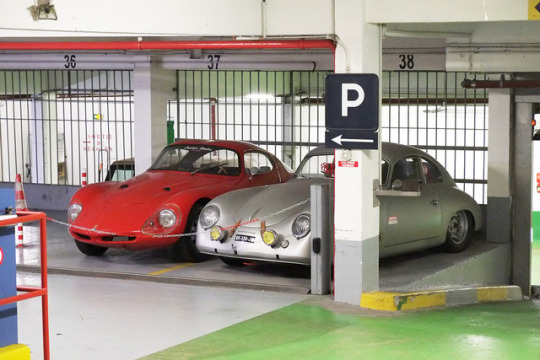

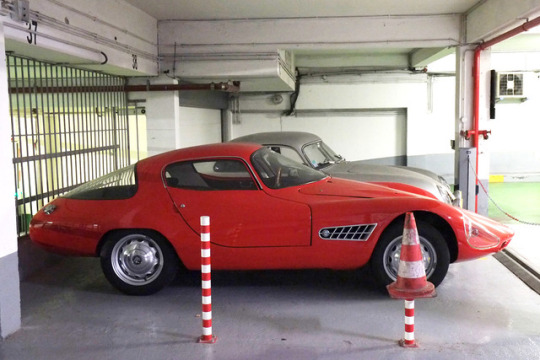
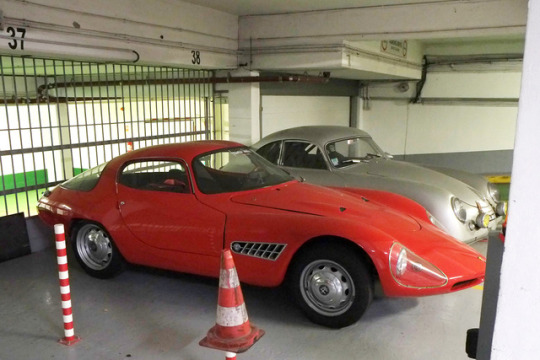


1959 Abarth-Alfa Romeo 1300 Berlinetta Colani and 1955 Porsche 356 A.
Welcome back in 2023 with this super rare combo! May your new year be full of wonderful surprises, like this French parking lot on a spring day in 2019 when I discover those gems.
111 notes
·
View notes
Video
Porsche 356 B Carrera GTL Abarth 1960 by S. Le Bozec
8 notes
·
View notes
Text
#automobile#mini#citroen#porsche#bmw#fiat#ford#sedan#audi#opel#vintage#renault#classic#volkswagen#volvo#buick#mercedes#plymouth#skoda#abarth#rallycar#gmc#amc#miraflores#lancia#classic-car#lowrider#chrysler#vintagecar#fiat-punto
0 notes
Photo

#motorsport #cars #turbo s #moto1sea #g63 #AMG #Porsche #lamborghini #fiat #abarth #land rover #defender #defender 90 #staysafe (at Kuwait City) https://www.instagram.com/p/CpsPSYfsjDF/?igshid=NGJjMDIxMWI=
0 notes
Text



1960 Porsche 356B Carrera 1600 GTL Abarth
My tumblr-blogs: germancarssince1946 & frenchcarssince1946
1 note
·
View note
Text
Women in Motorsports
Hello, this post is answering an ask about women in F1 and F1 related series. Great ask, let's go.
History:
So, unfortunately the history of women in motorsports is a combination of good and bad, but mostly bad. It's a story of limited opportunities, constant barriers, and many female racers being seen as the exception rather than the rule. F1 still to this day is a male-dominated sport, and even as recent as the 2010s many men in F1 deemed female racers to be a bad idea, or that women could not handle it. F1 legend Stirling Moss stated in 2013 or 2014 that "Women don't have mental strength for Formula 1 and would find it tiring" so this really is a culture in F1 that only in recent years has started to change.
But all throughout this history, women did fight for the right to race. Who were these women?
Maria Teresa de Filippis

The first woman to race in F1, she entered the sport in 1958. She competed in five Grand Prix's with Maserati and Behra-Porsche, and finished 10th in Spa. She possibly dealt with the worst of what the F1 world had to offer, as she was even banned from racing at some tracks, even being told at one point that "the only helmet a woman should wear is the one at the hairdresser's". While she only competed for a short time, she was a pioneer for women in motorsports.
Lella Lombardi
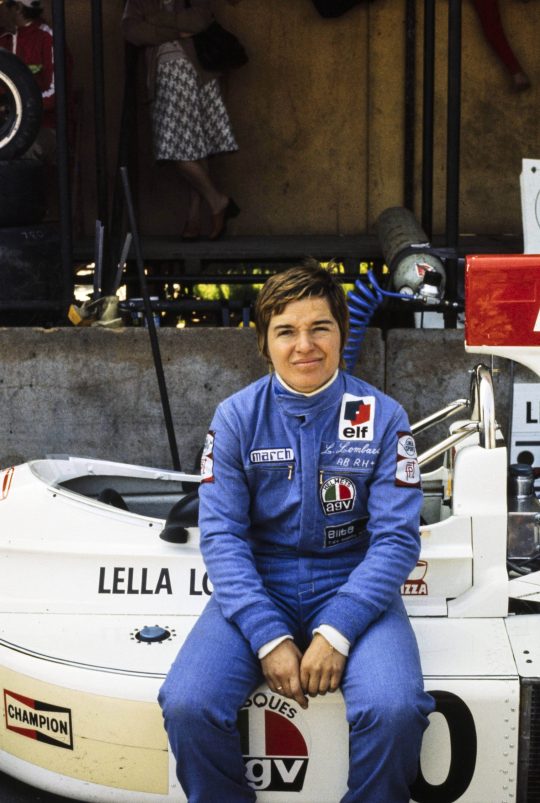
Lombardi is probably the most well known women in F1 history. She grew up racing, competing in karting at a young age and then rising up through other series, before being brought into F1 in 1974. She would race in F1 until 1976, and throughout her career would score points multiple times. Even when she left this series, she would still race for many years to come. While she is not the first woman in F1, she is perhaps the greatest trailblazer, as her performance and competitive spirit inspired many future female drivers and even garnered respect from many F1 legends.
Divina Galica
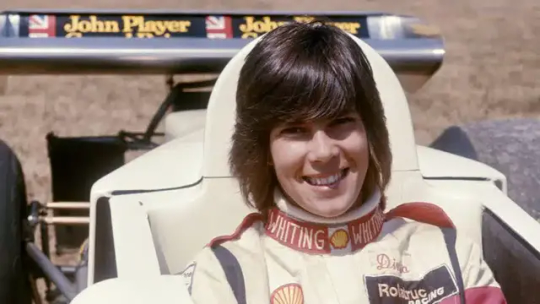
A famous British athlete (part of their olympic ski team) Galica also pursued a career in motorsports after performing well in a celebrity racing event. She competed in karting, then moved into F2 and F1. She raced in three Grand Prix's between 1976 and 1978, but unfortunately never qualified for the race.
Desiré Wilson
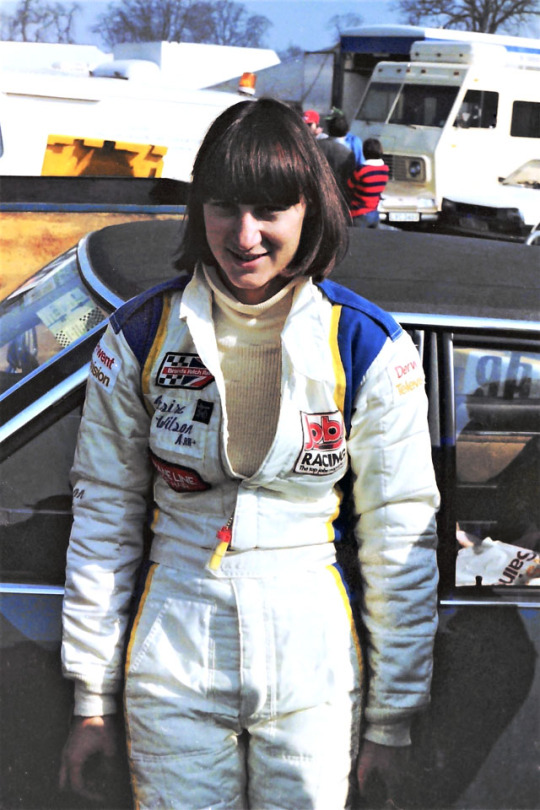
Known as one of the most accomplished female racers in the world, Wilson is the only woman to win an F1 race (as of right now), but this was in the non-championship series, Aurora AFX British F1 Series. Her only entry in the F1 championship series was the British GP, of which she did not qualify. Outside of F1, she had a thriving career, competing in Indycar events, winning the Monza 1000km, winning the Silverstone 6 Hours World Championship, winning the South African Formula Ford Championship, racing in Formula Pacific, the 24 Hrs at Le Mans, and more. A truly impressive racer and career.
Giovanna Amati

The most recent female F1 racer, Amati raced for Brabham in 1992. She had three entries, but did not qualify for a race. Outside of F1, she had a great career. She attended a motorsport academy from a young age, competing in her first series, Formula Abarth, in 1981. She then moved up to Formula 3 and Formula 3000 (scoring multiple win sin both series). She was able to secure a place in F1 after serving as the testing driver for Benetton, but her poor results meant she was fired quickly. After that, she went into other series like Monza 1000km, Sebring 12 hrs, the Ferrari Challenge, etc.
Development and Test Drivers:
Sarah Fisher: Indycar driver, tested for McLaren in 2002
Katherine Legge: Tested with Minardi in 2005
Susie Wolff: A Williams test and reserve driver in 2012, and the last woman to take part in a F1 race weekend as she drove in a FP in 2014. Currently the head of F1 Academy
María de Villota: Test driver for Marussia in 2012. Died from injuries in a crash.
Tatiana Calderón: An IndyCar driver who served as the development and test driver in 2017-218 for Sauber.
Jamie Chadwick: 2019 Williams signed her as a development driver until 2022.
Difficulties:
So, what are the difficulties or barriers that have held women back from competing. There are several, of course. In the early days it was general sexism and the belief that women could not handle racing that did it. The g-force of the car was deemed too aggressive, and even with technological advancements that have lowered g-force, this stereotype that women are too physically weak still lingers. The financial barrier is also a big one. Racing is extremely expensive, and securing a strong sponsorship is required to compete at the highest levels. But sponsors also tend to not go for female drivers as they view it more as a risk, because it is such a male-dominated sport. The general treatment female drivers have received over the years has also discouraged many from pursuing an F1 career. They are often treated to a lot more scrutiny and vitriol than there male counterparts, and on top of that are overly sexualized. I don't quite remember who, but one prominent F1 figure once stated that women should not compete because the second they put on a race suit, they are a sex object to be fantasized about. For young women this would be a massive deterrent to continuing their career. In general, the barriers women have dealt with are a mixture of all of these things put together. But what has the F1 world to try and alleviate these problems?
The W Series:

This series came about in 2019, and was a free-to-enter series for women intended to create a clear pathway and offer them more exposure. It was paused in 2022 after funding issues, and today is not in use. This did help launch the initiative to get more women into motorsports and gained the drivers who compete a lot more public attention.
The F1 Academy:

Launched in 2023, the F1 Academy is a series in the F4 category that is designed to provide support for female drivers, as well as higher access to sponsorships opportunities. Many modern drivers say that the biggest difficulty women in modern motorsports face is the lack of sponsorship opportunities, so the academy attempts to alleviate that. The Academy has their own races, but also trains the drivers on technical skills, media training, and physical conditioning. While this program is sometimes seen as controversial, mostly because people feel that it is condescending to put women in a separate category, this is mostly because people do not realize the purpose it. The goal is to help these young female drivers gain attention from sponsors so they can go on to afford to compete in the general categories, like F3, F2, and eventually F1. It is not intended as anything but a jumping off point and training center. Sponsors do not tend to go for young female racers because of the F1 gender bias, so the academy attempts to get rid of this, not replace the lower level series, and help the drivers gain more public attention.
The Future:
So, due to this growing momentum in recent years around women in motorsports, the question comes around; when will be see a woman in F1? I wish I had a good answer to this question. Most people believe that we could see a female F1 driver within the next decade, while others think it may take longer than that. As for how the academy helps, we haven't see the results quite yet. The drivers for the F1 Academy certainly have received much more attention that they would have due to the series, but they are still in the first generation so there are not clear results. The good news is that big name teams like Ferrari are starting to support young female drivers through their junior programs, and so perhaps we will see a female F1 driver sooner than we think. It still is a bit of an uphill battle, but I am optimistic about the future.
Alright, I hope I answered any questions about this topic. As a woman and a motorsport enthusiast, this a topic is very near and dear to my heart. Thank you again for the fantastic ask.
Cheers,
-B
71 notes
·
View notes
Text



Cistilia-Abarth 204
With resources and talent from the defunct Cisitalia Automobili, Carlos Abarth started his own company called Abarth & C. in Turin and the 204 A roadster was his first car. He acquired the remnants of Cisitalia including the 204 which he had modified by Porsche to fit their torsion bar rear suspension.
Visually the cars appeared like a scaled-down version of the Cisitalia grand prix cars. The engine was derived from a Fiat 1089cc unit fitted with twin Webers.
The car was successfully raced in the 1949 season by the Cisitalia-Carlo Abarth Team in the 1200cc class. After wins by Pierro Taruffi at the Circuit of Reggio Emilia and the Aosta-Gran San Bernardo, it looked like Abarth was set to take the Grand Prix of Madrid. Unfortunately all the 204s failed, leaving victory to the Simca-Gordini. That year Taruffi still clinched the F2 title for sports cars.
By 1950, Abarth removed all the Cisitalia logos from the 204 and prepared extensively for Tazio Nuvolari’s drive in the 10th Giro de Sicilia. At 57 years old, this was Nuvolari’s last stab at professional racing. He won the Palmero-Monte Pellegrino hillcimb which was his last victory in professional racing. Nuvolari retired from the team before the great Sicilian race.
32 notes
·
View notes
Note
What is your favorite car? Do you like any of the American muscle cars from the 60's?
So I wrote this out and I tend to over share so just bear with me for just a second 😅
My favorite car is Porsche 997 GT3RS 4.0 I can go on for days why it is but you can google it and figure out pretty quickly why it is.
But to answer your question no, I’m not a fan of American cars very much at all. Sure do some look cool yes, but they really don’t do anything for me. Even the new ones are extremely meh to me. If I had to pick tho it would probably be a 69-70 Charger RT or 69 Roadrunner. My dad had a 69 Hemi Roadrunner when I was a kid. It was vitamin C orange with black stripes, 4speed on the floor, black interior and bucket seats. He sold it to buy my family’s first house. One decision he’s slightly regretted his whole life. But he got our first house so at least it was for something good.
But what really did the American cars in for me is my cousin owned a MG/Fiat/Mini/Jdm repair shop. Basically if it wasn’t American they worked on it. But yea we’d have our family picnic’s there. I would sneak off and climb into a spitfire and act like I’m driving. I did this for many years. As I got older like 13 or so I’d come over and help them work on the cars. I fell in love with roadsters because of that. One of my first cars was a 92 NA Miata. I absolutely adored that car. I’ve had every generation since then. But my dad is a huge Mopar guy. So when we found out Mopar was partnering with Abarth to build a 124 spider again. I knew I had to have one. So I now have a full Mopar built Abarth 124 spider. So it’s best of both worlds! I get my happiness from it being a euro/jdm roadster and my dad is happy because it’s a built Mopar car!

My car if you never seen it before. His name is Finn 🦈
#car tism#autistic for cars#actually autistic#car nerd#124 spider#abarth#ask me please#ask me questions#ask me things#american muscle#euro cars#euro gang#car girl#trans
21 notes
·
View notes
Photo
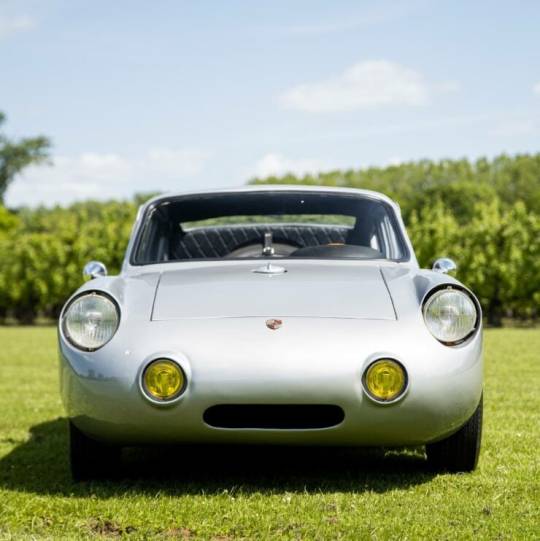
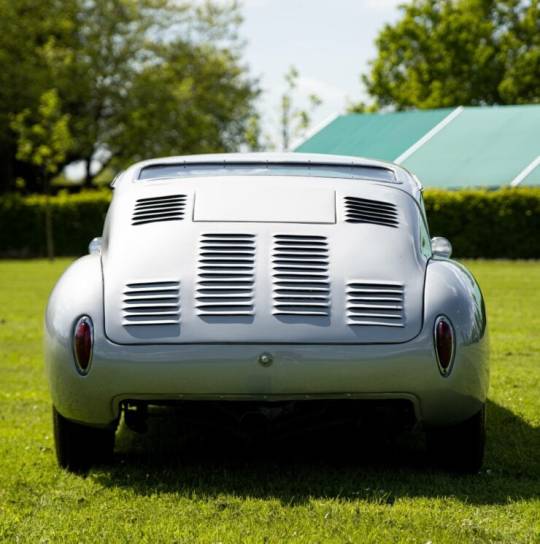
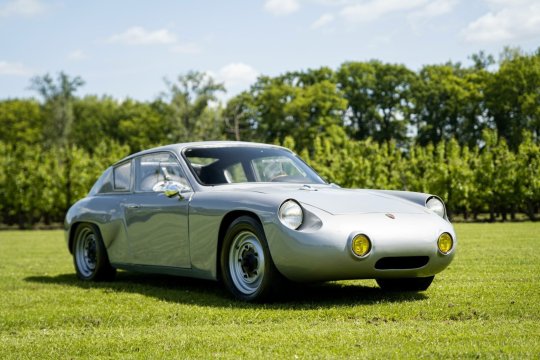
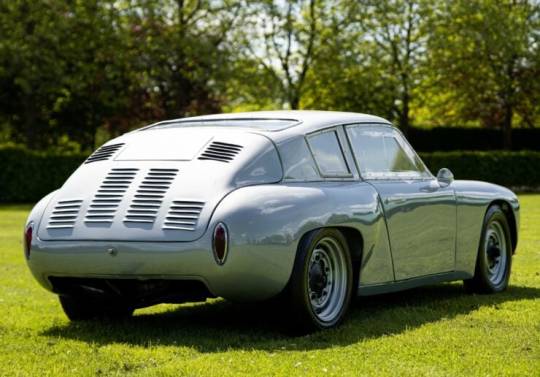


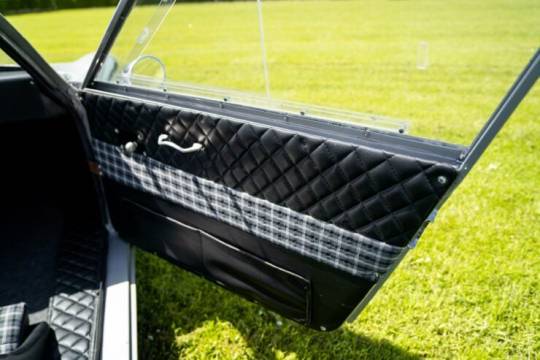

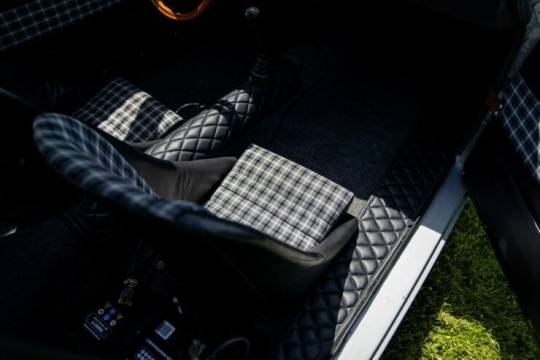
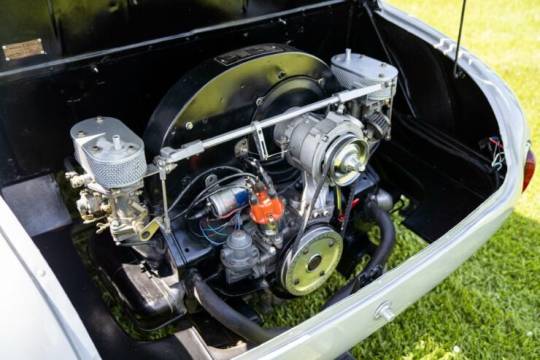
Porsche 356 Borghi Abarth (1 of 1.
This is the Porsche 356 Borghi Abarth, it’s a car with a fascinating backstory being the only one of its kind ever made – and it was only built because the 1953 Porsche 356 it’s based on burned to the ground in an accident. The car was built not in Italy but in Buenos Aires, Argentina. Italian coachbuilder Aldo Borghi had relocated to the South American country at a time when Argentina was booming economically and set up a coachbuilding and automotive race preparation shop.
Aldo Borghi was born in Italy, he trained as a young man in the art of automotive coachbuilding, specializing in the use of aluminum alloy to create strong, lightweight bodies. He later moved to Buenos Aires, Argentina, or more specifically he moved to the town of Tigre which is just slightly north of Buenos Aires but which is often included as being part of the large South American city.
In Argentina Borghi set up his own garage specializing in coachbuilding and developing sports cars for the bustling local racing scene. A number of significant cars came out of his workshop including the Alfa Romeo 2900 “Ballena” and the Alfa Romeo Spyder 6C 2500 “Paquito”, and he restored the Alfa Romeo 3000CM Carroceria Boano after an accident.
In 1965 he was brought the burned out hulk of a 1953 Porsche 356. Exactly what had happened to the car is lost to history but Borghi was able to salvage the floorpan, engine, transmission, and a number of other parts.
He then built a new body for the car entirely from hand-shaped aluminum, influenced by the styling of the Rocco Motto Abarth racing cars. The owner was delighted with the transformation and the car was notably lighter thanks to the loss of its original steel body.
Building a new body for a car that’s been badly burned isn’t an easy task, fortunately Aldo Borghi was more than up to the task.
He created an entirely new outer bodyshell in aluminum alloy by hand shaping each of the panels needed, using the styling of the aforementioned Rocco Motto Abarth racing cars as his guide. The end result would be a car with fastback styling, a sleek front end, wider rear wheel arches, and an engine bay that was considerably more roomy than the Porsche original.
The lack rearward visibility is perhaps the only major gripe, but there’s not a lot of need to see what’s behind you when you’re winning anyway.
Thanks to the loss of its heavier original steel body, the new car – named the Porsche 356 Borghi Abarth – was considerably faster than its forebear. The Porsche Super 90 engine was later upgraded to produce approximately 110 bhp, with power sent to the rear wheels via the original Porsche 4-speed manual transmission.
The car rides on steel wheels, with Porsche drum brakes at each of the four corners, and of course it has the independent front and rear suspension of the original 356.
Inside the car you’ll find a tastefully executed interior with leather seats that have plaid cloth inserts. This same combination is used on the doors, and the roof lining and rear of the car are finished in quilted leather.
Up front there’s a wood-rimmed classic steering wheel beside the gear lever, with three gauges front and center in the dashboard showing your speed, revs, and fuel level with the tachometer naturally in the center for optimal visibility.
#Porsche 356 Borghi Abarth#Aldo Borghi#Alfa Romeo 2900#Alfa Romeo Spyder 6C 2500#Alfa Romeo 3000CM#Porsche 356
133 notes
·
View notes
Photo

Vic Elford (Alfa Romeo T33/TT/3) et Juan Fernandez (Porsche 908/03) devant Jorge Ternengo (Abarth 2000 SP SE021) Wilson Fittipaldi (Lola T212) et Gianpiero Moretti (Lola T212) au départ des 1000 km de Buenos Aires 1972. © The GP Library. - source Carros e Pilotos.
#vic elford#juan fernandez#jorge ternengo#wilson fittipaldi#gianpiero moretti#alfa romeo#porsche#abarth#lola-ford#1000 km de buenos aires
60 notes
·
View notes
Text



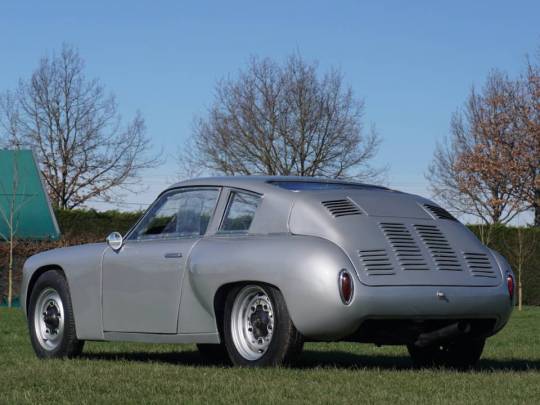
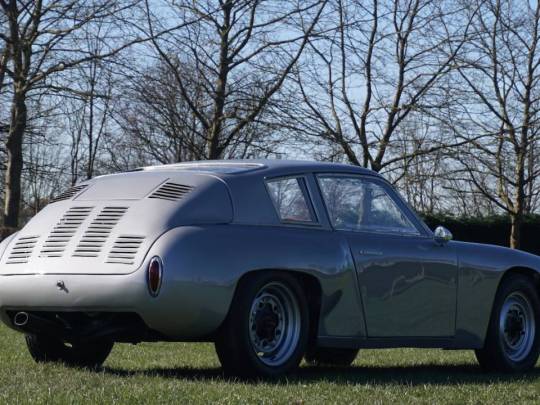

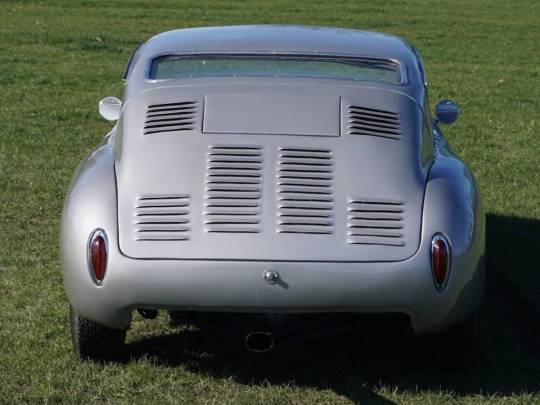
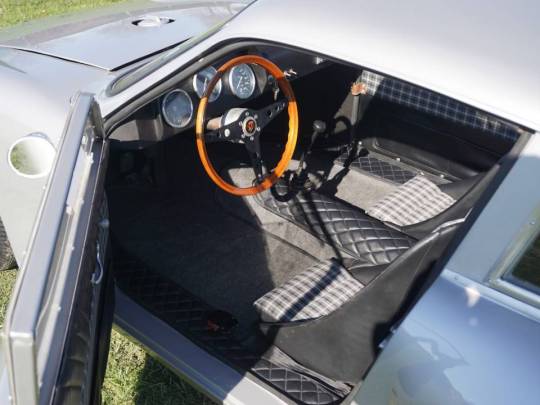
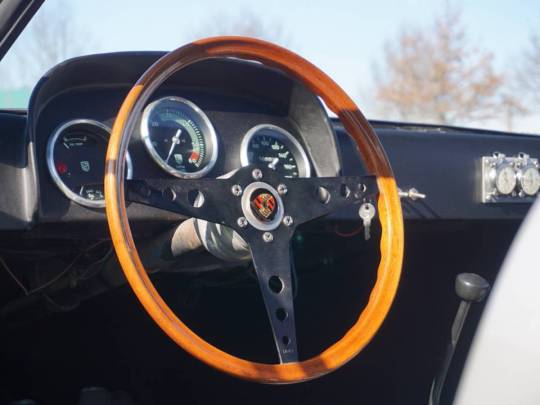

1953 Borghi 356 B Carrera GTL Abarth
Porsche 356 Abarth Borghi, 1953, 356 Super 90 engine, 1500cc, 110 hp, fully
16 notes
·
View notes
Note
went to a sim racing facility for the first time!! having never raced or driven in my life, I set a somewhat ok 58.1 in a Fiat Abarth 500 Assetto Corsa around Brands Hatch Indy.
In honor of this, do you have any Fun Fiat Facts?
Whipped out me sim rig to find out how good a time that was, and it must have taken me around ten laps to manage less (a 57.8)! (Gamer excuses for this sessions are a framerate barely at illusion-of-movement levels and some clutch mapping issue that made most shifts crunch.) For someone who never even drove, that's quite good! Now, maybe not "Run get a sim wheel right now for the good of humanity" good... but maybe "Finding out a used Logitech G25 is Christmas-present cheap may enrich your free time" good.
As for the Fun Fiat Fact request, it's denied: not only because I've already written about Fiat -and for my very first post no less- but most importantly because that car is not a Fiat! Indeed, since 2007 Abarth is, officially, a brand unto itself, that sells models like the 500 and the 124, just like Fiat sells models like the 500 and the 124. Now, I don't think anyone is going to try and pretend the similarities are just a coincidence or that an Abarth 500 is in any way not objectively a Fiat - but it's not a "Fiat 500 Abarth" any more than the one below is a "Chevrolet Cavalier Toyota".

That's right, there once was such thing as a Toyota Cavalier. Oh, brand engineering.
This is a rare but not completely isolated arrangement - see for example Ruf, German brand that makes vehicles based on Porsches, best known for the Ruf CTR -nicknamed "Yellowbird"- that bested the Ferrari F40's incredible top speed record.


Be careful who you call ugly under the 200mph barrier.
But yeah, all that is to say, I am not going to give you any fun Fiat facts. >:(
Let's give you fun Abarth facts then! Let's talk about fake exhausts. Big engines move a lot of gas -that's kind of the point- so they have big exhaust pipes for all that gas to leave, and high-tier exhausts are made of fancy materials that shine.
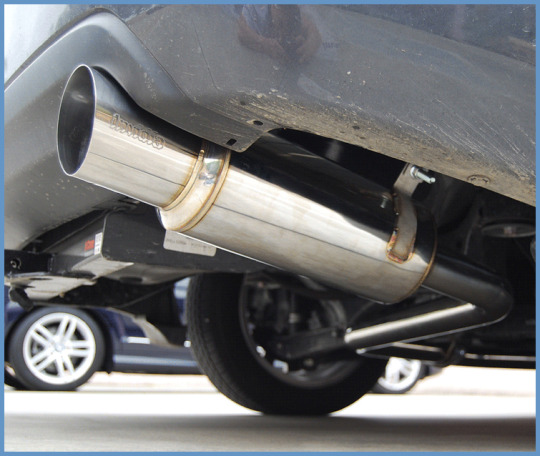
This -and our love for fancy shiny things in general- makes people like big shiny exhausts. But exhausts are very long, and making them big and shiny is costly. So people figured, what if we only make it wide at the end, where you actually see it?

After all, if the tip is large enough, it will satisfy regardless of what the rest of its length is like - sure, people may think it looks a bit weird when you take it out, but that only happens by the time you've already scored, doesn't it. But now, back to exhausts.
If you can just attach a bigger tip to the end of your exhaust, surely you can attach a tip of a different material and have a bog standard exhaust with a cool shiny tip, that now you can also shape to your designer's content!
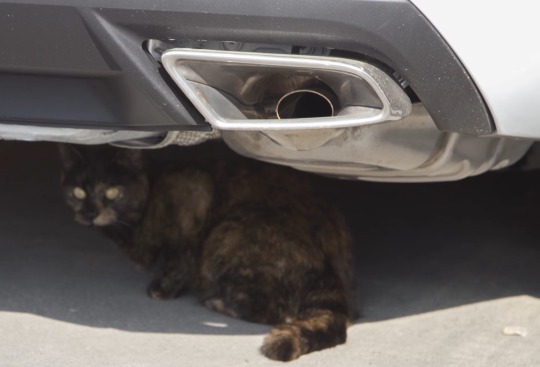
(Fun fact: an aftermarket exhaust system that only replaces the components that come after the catalytic converter -which, contrary to the popular misconception that confuses it with the muffler, is mounted right beside the engine- is called a "catback exhaust". Picture unrelated.)
But then, if the tip material is completely separate from the exhaust pipe, you can now just make it a plastic part of the bumper and it doesn't need to withstand temperatures as high and is even cheaper and easier to style!

And now that they're not mounted on the tip of the exhaust, they don't have to coincide with it, so you can split the exhaust into two tips, which is cooler because they're more! Hell, you can also do that by just making the exhaust coincide with one tip and have the other blanked off!
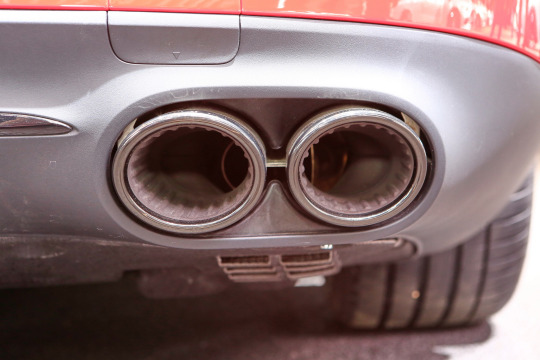
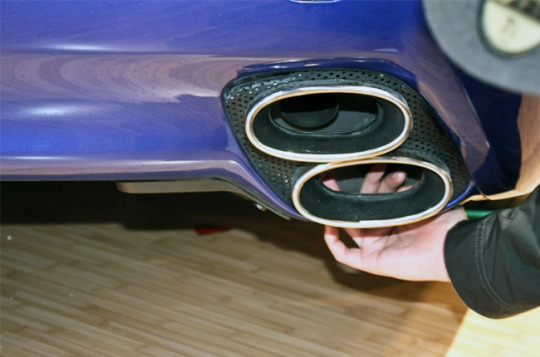
But at that point, why even have the exhaust show up back there at all? Just make the tips blank and make the exhaust go down behind them!
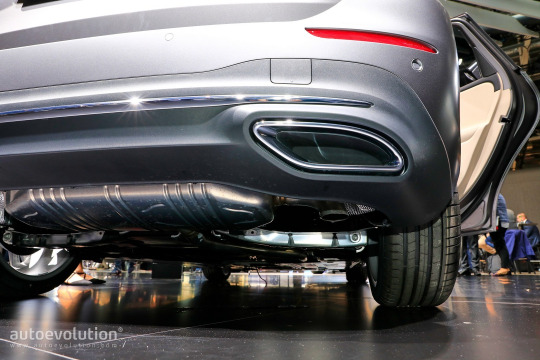
And at that point why not just fuck it up to the point where you need this exhaust evolutionary biology 101 course to even recognize it is meant to be an exhaust, if we can kill God who's left to stop us from dancing on his corpse.
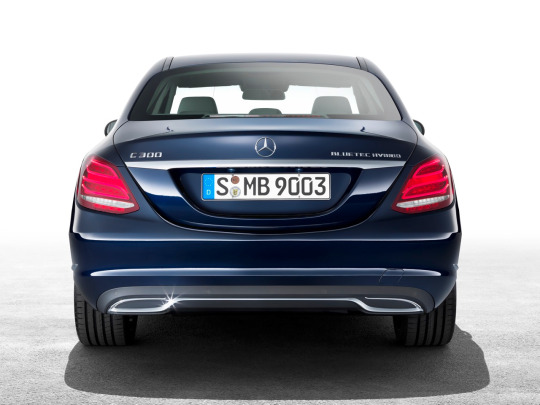
Well, the Abarth 500, as you might have guessed by now, has fake exhaust tips. But here's the weird thing: the real exhaust tips are not any less shiny and prominent than the fake ones. See for yourself in this sound video.
youtube
Oh also, I hope the devil got some killer stuff from the deal he made with the Abarth exhaust engineer, because if he only got a piddly little soul in exchange for the ability to turn 500 engine noise into this he got majorly screwed over.
Links in blue are posts of mine explaining the words in question - if you liked this post, you might like those!
15 notes
·
View notes